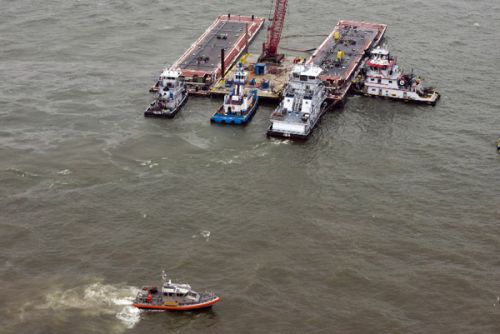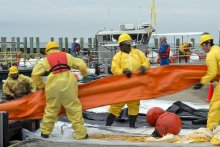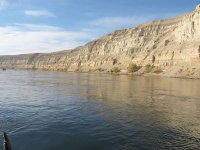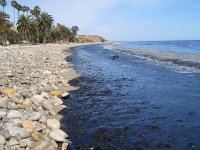Texas City Y
Oil Spill | Galveston Bay, TX | March 22, 2014
What Happened?
On March 22, 2014, the 585 foot bulk carrier M/V Summer Wind collided with the oil tank-barge Kirby 27706 in Galveston Bay near Texas City, Texas. The barge spilled approximately 168,000 gallons of intermediate fuel oil into lower Galveston Bay and eventually into the Gulf of Mexico. The majority of the discharged oil stranded on shorelines between Galveston and Matagorda Islands.
This was the first large oil spill response following the Deepwater Horizon oil spill. Drawing on lessons from that spill, and the extensive training NOAA provided, NOAA and our partners responded quickly to this incident. NOAA provided scientific support to the U.S. Coast Guard. That included trajectory forecasts of the floating oil movement, shoreline assessment, data management, overflight tracking of the oil, weather forecasts, and assessment of natural resources at risk.
What Were the Impacts?
The impacts of the spill are currently being evaluated through the natural resource damage assessment (NRDAInvestigation performed by trustees to identify injuries to natural resources caused by oil spills, hazardous substance releases, and grounding incidents in National Marine Sanctuaries, and plan restoration activities. The goal of NRDA is to restore natural resources and compensate the public for lost recreational use.) process. Specifically, impacts to shoreline habitats, birds, bottlenose dolphins, and recreational use are being evaluated.
What’s Happening Now?
On January 20, 2022, a $15.3 million settlement was finalized in Federal District Court to restore natural resources damaged from the 2014 Texas City Y oil spill in Galveston Bay, Texas.
“We are pleased to join our co-trustees to restore vital habitats, dolphins, birds and recreational areas injured by this oil spill,” said Nicole LeBoeuf, Director of NOAA’s National Ocean Service about the settlement in a Department of Justice press release. "Local communities and economies depend on resilient coastal ecosystems, and we look forward to working with the public on projects to restore them.”
Originally proposed December 3, 2021, this settlement was finalized after a 30-day public commenting period. This finalized settlement will go towards projects that restore bottlenose dolphins, birds, shoreline habitats, and outdoor recreational opportunities impacted by pollution during the Texas City Y oil spill.
“We are pleased to join our co-trustees to restore vital habitats, dolphins, birds and recreational areas injured by this oil spill. Local communities and economies depend on resilient coastal ecosystems, and we look forward to working with the public on projects to restore them.”
Nicole LeBoeuf, Director of NOAA's National Ocean Service.
Contacts
Laurie Sullivan
NOAA Assessment and Restoration Division
laurie.sullivan@noaa.gov
Stephanie Powers
NOAA Restoration Center
stephanie.powers@noaa.gov








